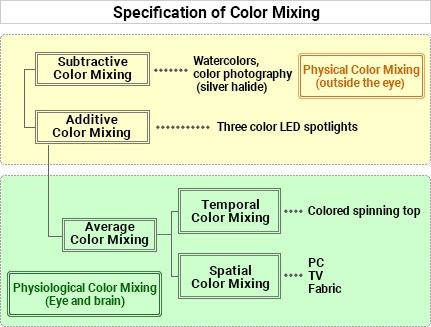Theory of Light and Color

17. Color Mixing (Part 3) Average Color Mixing
As mentioned in Chapter 15, there is a third type of color mixing called average color mixing, which is classified under additive color mixing (additive-average color mixing).
What makes additive color mixing "additive" is that the resulting color is brighter than the individual colors (more energy). For average color mixing, the brightness is the intermediate of the mixed colors (weighted average). In a broad mathematical sense, the weighted average is additive, so average color mixing is classified within additive color mixing.
Average color mixing occurs due to temporal or spatial conditions:
Temporal Average Color Mixing (Rotating Color Mixing)
A spinning toy top with multiple colors is an example of temporal average color mixing. For instance, a black and white top looks gray. Similarly, a yellow and red top makes orange. Moreover, the color changes according to the area ratio of each color.
When looking at the spinning top from a specific cone cell, light from each color area will alternate. If the rotation speed is slow, humans can recognize that each color is rotating. As the speed increases, the response time of the cone cells cannot keep up and perceives the average color.
The diagram on the right shows the change in incident light to a specific cone cell and its response. Red light and green light alternately enter in a step function. The physiological response speeds of the L- and M-cones are slow. Thus, the brain recognizes the red and green light as if they were incident at the same time, perceives yellow as an intermediate color, and the brightness felt is the average of the red and green.

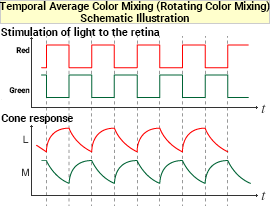
Spatial Average Color Mixing
Consider the red and yellow check pattern shown on the right. When the pattern is larger, the red and yellow areas are distinct even when adjacent. When the size of adjacent colors exceeds the position resolution determined by the distribution of cone cells on the retina, the eye perceives an average color rather than individual colors. Thus, the red and yellow look orange when the pattern becomes small.
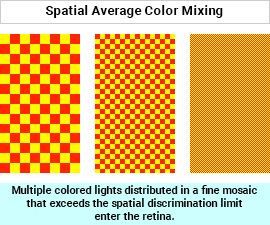
(Ⅰ) Example 1: Television and Computers
TV and computer screens have pixels of blue, green, and red. In blue areas, only blue pixels are shining. Similarly, only green pixels shine in the green areas, and only red pixels shine in the red areas.
Moreover, the green and red pixels shine in yellow areas, and the blue pixels do not emit light (Y=G+R). In magenta areas, only red and blue pixels light up (M=R+B). The blue and green pixels turn on in cyan areas (C=B+G). All three colors light up in white areas (W=B+G+R). Different colors can be created by changing the emission intensity ratio of each pixel (B, G, R).
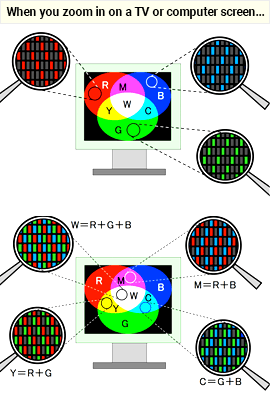
(Ⅱ) Example 2: Textiles
Fabrics that are woven with threads of different colors are perceived as the average mixture of the two colors when viewed at a distance.
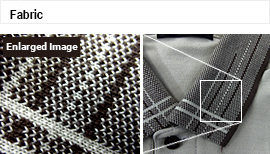
(Ⅲ) Example 3: Pointillist Painting
The painting technique known as pointillism, is an application of spatial color mixing. Color dots of various densities and colors are combined to create average colors over the entire painting.

Combining Color Mixing Methods: Gravure Printing
When looking at a gravure print with a magnifying glass, you can see fine color dots printed in CMYK, known as halftone dots. Subtractive color mixing occurs where halftone dots overlap.
Dots colors created by subtractive color mixing are perceived as another color in the final print due to spatial average color mixing.
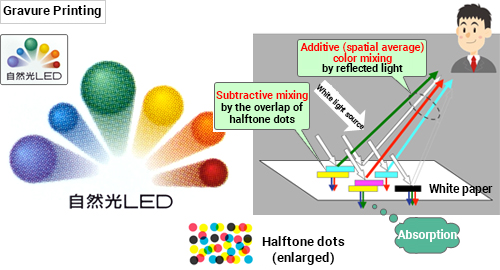
Physical Color Mixing and Physiological Color Mixing
In subtractive and additive color mixing, the process of color mixing is physical: color is mixed outside the eye. Average color mixing is physiological: individual color lights enter the eye physically, but they are mixed psychologically because temporal and spatial conditions exceed the responsivity of the eye.
